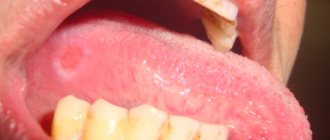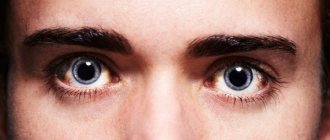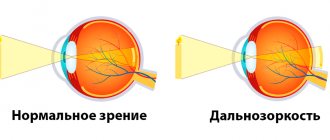HomepageEye DiseasesDiseases
From All About Vision
Have you noticed that the whites of your eyes have turned yellow? Jaundice, overuse of certain medications, or other medical conditions, sometimes serious, can cause yellowing of the eyes.
This article tells you everything you need to know about yellowing eyes and what steps you should take.
Why did the eyes turn yellow?
This can be either a side effect of taking certain medications or a sign of serious health problems: cirrhosis, cholecystitis, hepatitis, or blockage of the bile ducts. With these diseases, the concentration of indirect (free) bilirubin, the yellow bile pigment, increases in the blood plasma. It is formed from hemoglobin contained in red blood cells that have outlived their useful life. Bilirubin is toxic and is not needed by the body, so the liver and gallbladder utilize it through the intestines.
A healthy liver easily processes bilirubin and can even remove ten times the daily requirement from the blood. Once the free and harmful bilirubin passes through the liver, it becomes harmless. If the liver is diseased, a large amount of free bilirubin remains in the body and jaundice develops (hyperbilirubinemia). This is not a disease, but a sign of disorders in the body, which is expressed in the coloring of the skin and mucous membranes yellow.
What Causes Yellow Eyes?
The sclera (the white layer of the eye) should always appear white. If it suddenly turns red or changes color, you need to contact an ophthalmologist to identify the cause of the color change.
Icterus (yellowness) of the conjunctiva
One of the reasons for changes in eye color may be icterus of the conjunctiva. This is the medical term used for yellowing of the eyes. (The term scleral icterus is also sometimes used to describe yellowing of the eyes).
Jaundice
In most cases, yellow eyes are a symptom of jaundice: due to increased levels of the pigment bilirubin, the skin and eyes change color. Although jaundice itself is not a disease, it is an indication that the liver, gallbladder, and bile ducts are not functioning properly.
Jaundice most often occurs in newborns. According to the US Centers for Disease Control and Prevention (CDC), approximately 60% of all newborns are susceptible to jaundice. Premature babies are at increased risk because their livers have not yet developed enough to eliminate bilirubin.
Jaundice is much less common in older children or adults. If this happens, then, as a rule, a more serious disease is suspected that requires treatment. As with newborns, attention should first be paid to the liver.
Mild cases of newborn jaundice usually resolve on their own. Only 1 in 20 children may need specialized treatment. The standard treatment for moderate jaundice is light (phototherapy), which lowers bilirubin levels, and the baby usually recovers very quickly.
Note. Changes in eye color due to jaundice do not affect vision.
Why is it important to monitor your eye shade?
If you notice that the whites of your eyes are covered with yellow spots or evenly yellowed, this does not necessarily indicate liver and gallbladder diseases. Most likely, you have ophthalmological causes, and not symptoms of any other disease, if this is also accompanied by:
- itching or pain;
- Discharge;
- Increased photosensitivity;
- Inflammation of the eyelids;
- Deterioration of vision.
Other eye diseases
Causes of yellow whites of the eyes
If a person has yellow whites of the eyes. then this may also indicate problems with the organs of vision. This may be a pinguecula (yellow formation). The cause of the disease is a violation of lipid metabolism. As a result, a wen of pronounced yellow color forms in the eye. If the pinguecula causes inconvenience, it is removed using a simple operation. A slight scar may remain on the eye, almost invisible to the naked eye.
More than two percent of the world's population suffers from a condition called pterygium. At its core, it is conjunctevitis, which constantly increases and occupies more and more area of the surface of the eye. This disease is very dangerous. And it requires quick treatment. The danger lies in the possibility of it spreading onto the pupil. If diagnosis is delayed or left untreated, pterygium may well lead to complete loss of vision.
Reasons why eyes may turn yellow
There are some eye diseases that can cause yellow spots to appear on the sclera (whites) of the eyes. All of them are treatable and do not lead to such irreversible consequences as blindness. These include:
- Nevus. Essentially, these are the same moles, but not on the skin. They may be yellow or brown. If the nevus grows too much, it can impair vision, so you need to see an ophthalmologist and take action. Another reason why it needs to be monitored is that a nevus can become a malignant tumor - melanoma. To prevent the growth of nevus, it is recommended to wear glasses or lenses with a UV filter for preventive purposes;
- Cyst of the conjunctiva (clear membrane of the eyes). A benign neoplasm in the form of a capsule or yellow speck, which, if there is discomfort or a cosmetic defect, can be quickly and painlessly removed under local anesthesia using a laser;
- Pinguecula. A sign of aging of the conjunctiva or a consequence of excessive exposure to ultraviolet rays. If it does not bother you at all, there is no need for treatment. For inflammation of the pinguecula, doctors resort to prescribing moisturizing eye drops; in rare cases, a decision is made to remove it;
- Pterygium. Abnormal thickening of the mucous membrane of the eye due to aggressive environmental influences (dry air, dust, UV and IR rays). In severe cases, it can even distort the shape of the cornea and cause astigmatism. Subject to removal according to doctor's indications;
- Horner-Trantas spots. They arise as a result of an allergic reaction and are similar to grains in the eyes, which are localized mainly around the cornea.
- Nausea;
- Bloating;
- Loss of appetite;
- Skin itching;
- Darkening of urine;
- Pale stool color;
- Constant feeling of fatigue;
- Swelling in the legs;
- fever, chills, or chills;
- Increased levels of bilirubin fractions in the blood.
How to tell if the iris is really yellow
The color and pattern of the opaque iris depends on genetic characteristics. During examination, the doctor determines its pattern and color, the pigment border of the pupil. Normally, its shades can range from sky blue to rich brown. If the iris becomes inflamed, its pattern becomes “shaded” and the color changes - brown becomes darker and takes on a rusty tint, and blue becomes saturated with yellowness and becomes greenish. Often, a change in the color of the pupil membrane is the first symptom of inflammation of the iris. In this case, you should pay attention to the possible difference in shades in both eyes.
An iris with a golden-yellow rim indicates Wilson-Konovalov disease, in which the metabolism of copper is disrupted, and as a result, the functioning of many organs is disrupted. The yellow area around the pupil can also signal that the liver is clogged. Much more noticeable than the color change of the iris is the yellowness of the sclera of the eyes - its causes can be very different.
What diseases can cause changes in the color of the whites of the eyes? 8 possible reasons:
- Pancreatitis - inflammation of the pancreas, which produces gastric juice - and infections affecting this organ;
- Oncology (cancer of the liver, pancreas or gall bladder);
- Anemia - premature breakdown of red blood cells (blood cells from which bilirubin is synthesized);
- Rare genetic or autoimmune diseases that may interfere with the processing of bilirubin;
- Problem with the outflow of bile (stagnation, cholelithiasis);
- Cirrhosis (death of liver cells) and other liver diseases;
- Malaria;
- Jaundice of newborns (usually due to prematurity).
Medicines that should only be taken as directed by a doctor to avoid yellowing of the eyes and skin, as well as possible harm to health:
- Paracetamol (acetaminophen);
- Antibiotics;
- Concentrated oral contraceptives (COCs);
- Chlorpromazine;
- Anabolic steroid.
Yellowing of the sclera in children
In childhood, such symptoms rarely appear. They mostly occur in adults. Newborn babies may experience these signs. This is due to an unformed digestive system. At this age, bilirubin accumulates faster and the liver cannot remove it. Premature babies have a high risk of the appearance of proteins with red streaks and yellowness.
This eye shade is only one of the symptoms. Typically, yellowing of the skin, lethargy, fever, and lack of appetite are observed. In most cases, such symptoms occur in the maternity hospital. The child needs a doctor's examination and drug therapy. If a child has a genetic predisposition to serious diseases, he needs regular examinations by specialists.
How are yellow eyes treated?
Therapy directly depends on the underlying cause. Yellowing is considered a symptom, and to find out the cause of problems in the body, the doctor will prescribe a series of examinations.
First of all, to exclude diseases of the internal organs, it is necessary to donate blood plasma for bilirubin, as well as conduct a detailed clinical blood test, undergo diagnostics of the liver, pancreas and gall bladder.
Further, if it turns out that the yellowing of the sclera was caused by, for example, hepatitis or malaria, the doctor will prescribe antibiotics, antifungal or antiprotozoal drugs. If there is a history of alcohol abuse, the first step to treatment is to break the habit. Fortunately, the liver is able to fully recover with lifestyle changes and following medical recommendations. You may have to limit your intake of sugar, salt and fatty foods - they make it difficult for the organ to function. And when jaundice is caused by blockage of the bile ducts (cholestasis in an advanced state), it may come down to surgical intervention.
If you notice yellowing of the whites of your eyes, do not let it happen and visit an ophthalmologist. It will help you understand the reasons for the change. Almost nothing happens in our body for nothing, and the sooner you find out your diagnosis, the greater the likelihood of avoiding unpleasant consequences and radical treatment methods.
Diagnostic and treatment methods
Treatment is prescribed after a comprehensive ophthalmological examination and includes medication, hardware, surgery and other treatment methods. Sometimes, in order to get rid of the yellowness of the sclera, it is enough for the patient to change his diet and lifestyle. Since yellowness of the sclera is a symptom, the main treatment is carried out by a specialized specialist (therapist, infectious disease specialist, etc.).
Consultation with an ophthalmologist is recommended in the event of the appearance of isolated yellow spots or complete “yellowing” of the mucous membrane of the eye. Even if there are no other symptoms, we recommend that you consult your doctor to find out the causes and prescribe timely treatment for the underlying disease.
To make an accurate diagnosis, Dr. Belikova’s Eye Clinic uses clinical research methods, optical coherence tomography, ultrasound and laboratory diagnostic methods, including general and biochemical blood tests, urinalysis, genetic and immunological tests.
If you notice the above symptoms, we advise you to contact an ophthalmology clinic and get advice from a highly qualified specialist.
Eyes of different colors
The correct name for this phenomenon is heterochromia. It means that a person's left and right eyes have different shades. This anomaly occurs in only 1% of people on Earth. Also a sign of heterochromia is the presence of areas of a different shade. The phenomenon is associated with an uneven distribution of melanin in the anterior layer of the iris. In the vast majority of cases, this is a congenital anomaly, but sometimes heterochromia can be caused by a disease or injury to the visual organs. It is impossible to cure a congenital pathology, but an acquired one can be corrected.
Heterochromia manifests itself in varying degrees. When overweight, a person has eyes of different colors: most often it is a combination of brown with blue, gray or green. With partial or central heterochromia, only part of the pupil differs in color - this looks very attractive and original.
Table of primary eye colors
We are accustomed to thinking that there are three shades of the iris - brown, green and blue. However, in the scientific community it is customary to distinguish slightly more colors. Here's how scientists divide them.
| Hue | How is it formed | Where is it distributed? |
| Blue | This is the natural color of the outer layer of the vessels of the iris. This eye shade appears when the fibers of the outer layer of the membrane are of low density and contain little melanin to give the pupil any other shade. | The vast majority of fair-skinned babies have blue eyes (dark-skinned babies have brown eyes). Over time, melanocytes begin to produce melanin, which accumulates in the iris. Typically, this occurs between six months and three years, but the process of stabilizing eye color can last up to 12 years. |
| Blue | People with blue eyes appeared on Earth relatively recently and, perhaps, all descended from the same ancestor. Initially, people had brown eyes, but no more than 10,000 years ago (this is very short compared to the history of mankind!) A mutation occurred in the HERC2 gene, which led to a decrease in melanin production. This is how eyes of blue and gray colors appeared - their irises contain less pigment. The fewer collagen fibers, the more saturated the shade will be. | This is the second most common shade after brown. It is common in European countries, especially Northern Europe, among the Caucasian population of the USA, and in the Middle East. |
| Gray (steel) | Like blue eyes, gray eyes are the result of a mutation in the HERC2 gene. How does it turn out to be gray and not blue? The secret is in the number of collagen fibers - gray-eyed people have less of them in the iris. | Most often, people with such eyes can be found in Eastern and Northern Europe. The shade is also common among residents of the Middle East and North-West Africa. |
| Green | This is a very rare color that appears due to a small amount of melanin and the distribution of lipofuscin pigment in the iris. | People with green eyes are found in Northern and Central Europe. Green eyes are an exclusive phenomenon; only 1-2% of the world's population can boast of them. |
| Amber | The yellow-brown color is a phenomenon explained by the presence of lipochrome pigment. Amber eyes can be closer to either light yellow or dark brown. | Amber color is often called simply brown. It's quite rare. To see people with such eyes, it is best to go to Asia or South America. |
| Black | In people with such eyes, the amount of melanin is very high, and the color of the eyeball may have a yellowish or grayish tint. | Black eyes are common among the Mongoloid race. Black-eyed people are predominantly in the south and east of Asia. |
| Brown | The mesodermal layer contains a lot of melanin. Reflecting from the shell, it gives a brown color. | This is the most common eye color in the world. It is widespread in all parts of the world. |
| Swamp (walnut, brown-green) | This is a mixed color that changes saturation depending on the lighting. The melanin content in the iris is moderate, and heterogeneous coloring is not uncommon. | The largest number of people with marsh eye color live in North Africa, the Middle East, and Brazil (among people of Spanish origin). |
Rare colors such as pink, purple, and red can only be the result of albinism.
There is another system for classifying iris shades, developed by V.V. Bunak. This is the one most often used in Russia. What are the eye colors of a person according to this system?
- Dark. These include brown (and light, close to sand, and dark brown), black and yellow.
- Light. These are grey, blue and blue.
- Transitional, or mixed. This includes green eyes and various varieties: gray-green, hazel, etc.
What determines eye color
The iris of the eye has two layers: the anterior one is mesodermal and the posterior one is ectodermal. The number and distribution of chromatophores containing melanin most influence the color of human eyes. The ectodermal layer contains pigment cells and is always dark (with the exception of albinos). The location of the vessels and the density of the fibers are also of great importance.
Dependence of eye color
the amount of melanin is direct: the more there is, the darker the eyes will be. Albinos have pinkish eyes because melanin is completely absent and blood vessels are visible through the iris.
Can eye color change with age?
There are several reasons why the color of the pupils of the eyes may appear different. The most obvious factors:
- External factors (weather, light levels, makeup, etc.). Light-colored eyes are especially prone to color fluctuations.
- Powerful emotions. When a person experiences joy, despair, anger and other strong feelings, hormonal levels change, which has a slight effect on the color of the iris.
- Tears. Due to the abundance of moisture, the whites shine and appear even lighter, shading the iris. As a result, the eye color appears piercingly bright.
The color of the pupils of the eyes changes with age. Infants with fair skin have blue eyes at birth. For most children, it changes by age three, but there are cases where the shade continues to change up to age 12. In older people, eyes usually become lighter due to a decrease in melanin production against the background of sclerotic and dystrophic processes.
Diseases can also affect the shade:
1. Fuchs syndrome. It is a non-granulomatous inflammation that can affect one or both eyes. Heterochromia of the iris is its main symptom: the lens becomes cloudy, the iris becomes thinner and brightens. Progression of the disease leads to phacoemulsification of cataracts and secondary glaucoma.
2. Posner-Schlossman syndrome. It is manifested by blurred vision, increased sensitivity to light, spots of light in front of the eyes, and rapid fatigue. One of the symptoms is darkening of the iris.
3. Pigmentary glaucoma. Pigments from the back surface of the iris travel to other structures of the eye. As a result, part of the protein becomes the same color as the iris. Other manifestations of glaucoma are blurred vision, floating circles before the eyes, and corneal edema.
4. Melanoma of the iris. Melanoma is a malignant tumor that is brown in color. Because of it, the boundaries of the iris are disrupted, the cornea becomes cloudy, and a brown neoplasm is noticeable in the anterior chamber of the eye. Other symptoms include blurred vision, weight loss, and lack of strength.
5. Lymphoma. It is also a malignant disease that can be identified by the fact that the iris appears faded. There is a decrease in vision and narrowing of the fields.











